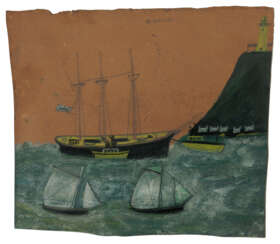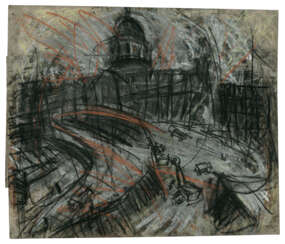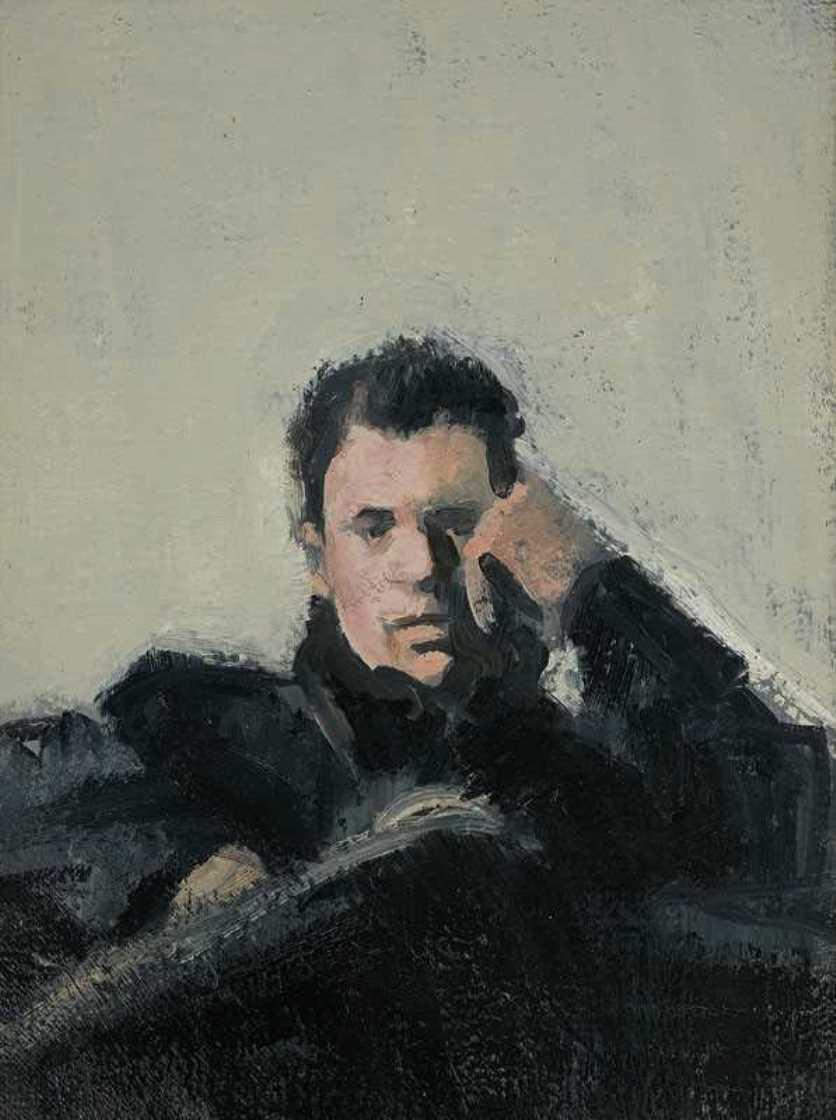
Paintings — Modern British and Irish Art Day Sale

Roger Hilton was a pioneer of abstract art in post-Second World War Britain. Often associated with the 'middle generation' of St Ives painters – Terry Frost, Patrick Heron, Peter Lanyon & Bryan Wynter – he spent much of his career in London, where his work was deeply influenced by European avante-garde movements such as tachisme and CoBrA.

Ivon Hitchens was an English painter who started exhibiting during the 1920s. He became part of the 'London Group' of artists and exhibited with them during the 1930s. His house was bombed in 1940 during World War II. Hitchens and his family abandoned London for the Sussex countryside, where he acquired a small area of woodland on Lavington Common (near Petworth), and lived there in a caravan, which he gradually augmented with a series of buildings. It was here that the artist further developed his fascination with the woodland subject matter, and this pre-occupation continued until the artist’s death in 1979.

Prunella Clough was a prominent British artist. She is known mostly for her paintings, though she also made prints and created assemblages of collected objects. She was awarded the Jerwood Prize for painting, and received a retrospective exhibition at Tate Britain.

Peter Thomas Blake is an English pop artist. He co-created the sleeve design for the Beatles' album Sgt. Pepper's Lonely Hearts Club Band. His other works include the covers for two of The Who's albums, the cover of the Band Aid single "Do They Know It's Christmas?", and the Live Aid concert poster. Blake also designed the 2012 Brit Award statuette.
Blake is a prominent figure in the pop art movement. Central to his paintings are his interest in images from popular culture which have infused his collages. In 2002 he was knighted at Buckingham Palace for his services to art.

Eduardo Paolozzi was a Scottish artist renowned for his pioneering contributions to the Pop Art movement. His work, characterized by an amalgamation of popular culture references and technological imagery, played a significant role in shaping the visual arts landscape of the 20th century. Eduardo Paolozzi's graphic works, particularly from the 1960s, broke new ground in the silkscreen medium, with notable series such as "As Is When" and "Moonstrips Empire News" showcasing his innovative approach to art that combines elements of science, technology, and pop culture.
After a transformative period in Paris, where he interacted with key figures of the Surrealist movement, Eduardo Paolozzi returned to the UK, where he became a central figure in the formation of the Independent Group. This collective was instrumental in the development of British Pop Art, with Paolozzi's early collages, especially "I Was a Rich Man's Plaything," marking a seminal moment in the genre's emergence.
His artistic ventures were not confined to printmaking and collage; Eduardo Paolozzi's sculptures and mosaic murals, such as those for Tottenham Court Road tube station in London, also garnered acclaim for their intricate detail and thematic complexity. The artist's influence extended into his academic roles, where he nurtured future generations of artists.
Eduardo Paolozzi's legacy is preserved through extensive collections and exhibitions, such as at the National Galleries of Scotland, which holds a significant number of his works. This includes a recreation of his studio, providing insight into his creative process and the diverse influences that shaped his art.
For enthusiasts and collectors keen on delving deeper into Eduardo Paolozzi's world, signing up for updates can offer exclusive access to sales and auction events related to his works. This ensures that aficionados stay informed about opportunities to engage with the art and legacy of this influential figure.

John Ronald Craigie Aitchison was a Scottish painter. He was best known for his many paintings of the Crucifixion, one of which hangs behind the altar in the chapter house of Liverpool Cathedral, Italian landscapes, and portraits (mainly of black men, or of dogs). His simple style with bright, childlike colours defied description, and was compared to the Scottish Colourists, primitivists or naive artists, although Brian Sewell dismissed him as "a painter of too considered trifles".
His career-long fascination with the crucifixion was triggered by a visit to see Salvador Dalí's Christ of St John of the Cross in 1951 after it was acquired by the Kelvingrove Gallery.

John Ronald Craigie Aitchison was a Scottish painter. He was best known for his many paintings of the Crucifixion, one of which hangs behind the altar in the chapter house of Liverpool Cathedral, Italian landscapes, and portraits (mainly of black men, or of dogs). His simple style with bright, childlike colours defied description, and was compared to the Scottish Colourists, primitivists or naive artists, although Brian Sewell dismissed him as "a painter of too considered trifles".
His career-long fascination with the crucifixion was triggered by a visit to see Salvador Dalí's Christ of St John of the Cross in 1951 after it was acquired by the Kelvingrove Gallery.






































































